
5 Hip Flexor Drills To Target Weak & Tight Hips
Your hip flexors, a group of muscles responsible for lifting your knees and bending at the waist, play a vital role in your daily movements. Whether you’re walking, running, or even sitting, these muscles are in action.
However, many people struggle with issues related to their hip flexors – some have tight hip flexors, while others may suffer from weak ones (and many have both!)
Understanding the difference and knowing how to address these concerns is the key to improved mobility, reduced discomfort, and enhanced performance.
We’ll look at:
- What are your hip flexors & what do they do?
- Weak vs tight hip flexors
- Tight hip flexors test
- Top 5 hip flexor drills to strengthen your hips
- Using a foam roller on your hip flexors
What Are Your Hip Flexors & What Do They Do?
When it comes to understanding the mechanics of our bodies, it’s essential to familiarize ourselves with the hip flexors. These mighty muscles play a crucial role in our everyday movements and deserve a closer look.
The hip flexors are a group of muscles located deep within the pelvic region, specifically in the front of your hips. They include the psoas major, iliacus, and rectus femoris muscles.
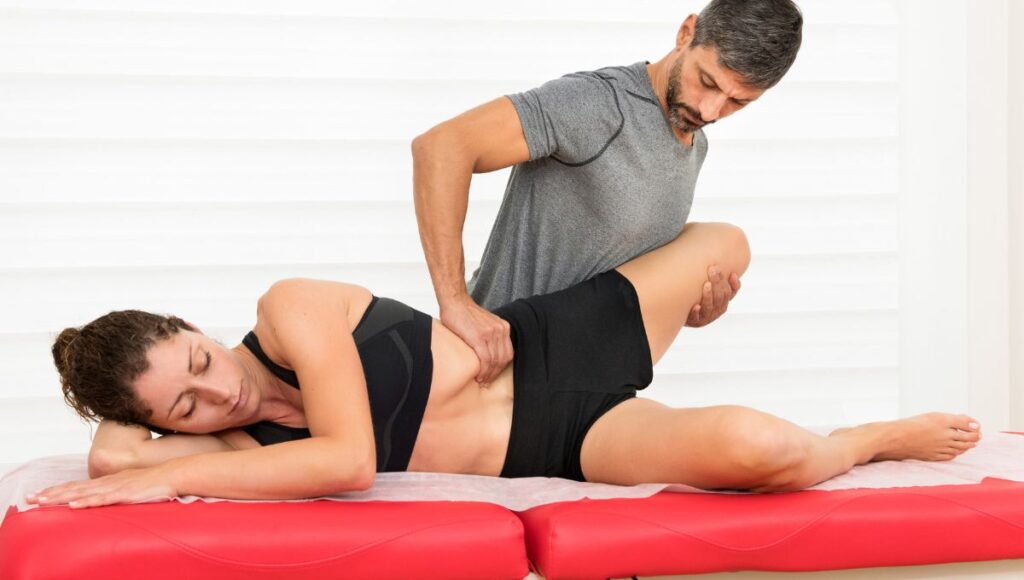
So, what do these hip flexors actually do?
To put it simply, your hip flexors enable you to bend your hips and bring your thighs toward your torso.
They are responsible for actions like walking, running, kicking, and even sitting down or standing up from a seated position. It’s safe to say that without properly functioning hip flexors, our mobility would be severely limited.
The primary function of the hip flexors is to facilitate movement by engaging other muscle groups in collaboration. For instance, when you walk or run, your hip flexors work in conjunction with your glutes and hamstrings to propel you forward smoothly and efficiently.
Similarly, during activities that require explosive power like jumping or sprinting, strong and flexible hip flexors provide the necessary force for optimal performance.
Weak vs. Tight Hip Flexors
When it comes to hip flexors, it’s crucial to understand the difference between weak and tight muscles. Both conditions can lead to discomfort and limit your mobility, but they require different approaches in terms of training and rehabilitation.
Weak hip flexors occur when the muscles are underdeveloped or lack strength.
This can happen due to a sedentary lifestyle or a lack of targeted exercises. Weak hip flexors may manifest in various ways, such as difficulty lifting your knees high during walking or running, feeling fatigued after prolonged periods of sitting, or experiencing lower back pain.
Addressing weak hip flexors involves specific exercises that target these muscles directly.
On the other hand, tight hip flexors refer to a state where the front of your hips feels tense and restricted.
This tightness can be caused by factors like prolonged sitting, excessive use of certain leg exercises without proper stretching, or even stress and anxiety that cause tension in the body.
Tight hip flexors can lead to imbalances in your posture and gait, contributing to lower back pain and limited range of motion.
To differentiate between weak and tight hip flexors, it’s helpful to pay attention to how your body feels during movements that involve these muscles. If you struggle with lifting your leg off the ground while lying down on your back or experience discomfort when bending forward at the waist with straight legs, you might have tight hip flexors.

Conversely, if you find it challenging to perform exercises like leg raises or engage your core properly during activities that require hip flexibility, weak hip flexor muscles could be the culprit. Addressing both weak and tight hip flexors requires regular exercise routines that focus on strengthening these muscles while also incorporating stretching techniques for flexibility improvement.
Moreover, using a foam roller on your hip flexor area can be immensely helpful in relieving tension and increasing blood flow before engaging in workouts targeting these muscle groups. The foam roller helps break up any adhesions or knots, allowing the muscles to move more freely and efficiently.
Understanding the distinction between weak and tight hip flexors is essential for effectively addressing any discomfort or limitations you may be experiencing.
Whether your hip flexor muscles are weak or tight, incorporating targeted exercises and stretches into your fitness routine can help you find relief and improve functionality.
Thomas Test – Tight Hip Flexors Test
Many people may not realize they have tight hip flexors until they start experiencing discomfort or limitations in their movement. If you suspect that your hip flexors are tight, there is a simple test you can do to assess their flexibility.
This test, known as the Thomas Test, can give you a better understanding of the condition of your hip flexors.
- To perform the Thomas Test, find a flat surface where you can lie down comfortably. Start by lying on your back with your legs fully extended
- Bring one knee up towards your chest and hug it close while keeping the other leg straight and resting on the ground
- Now, slowly lower the leg that is pulled towards your chest until it is fully extended and resting on the ground
- Pay close attention to what happens with your other leg. If it stays on the ground and remains fully extended without lifting off or bending at the knee, then your hip flexors are likely flexible enough
- If you find that your opposite leg lifts off the ground or bends at the knee when trying to extend the other leg, this indicates tightness in your hip flexors.
This test reveals how much flexibility or mobility you have in this area and can help guide you in determining if you need to work on loosening up those muscles.
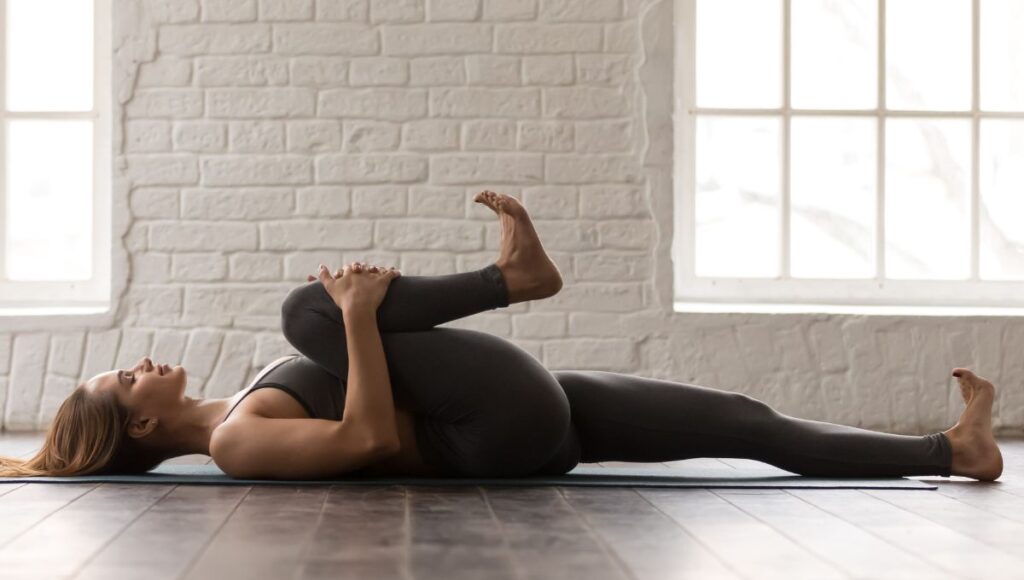
Understanding whether or not you have tight hip flexors is crucial because addressing this issue through targeted exercises can improve overall mobility and prevent further discomfort down the line.
By recognizing this problem early on, you can take appropriate steps to address it before it becomes more severe.
Now that we have identified how to test for tight hip flexors let’s move on to some effective drills for improving their flexibility!
Top 5 hip flexor drills
To strengthen your hip flexors and improve your overall hip mobility, incorporating specific drills into your exercise routine is essential. Here are the top five hip flexor drills that will help you achieve stronger and more flexible hips.
1. Knee-to-Chest Stretch
Begin this drill by lying on your back with your legs extended. Slowly bring one knee towards your chest, using both hands to gently pull it closer if necessary.
Hold this position for 20-30 seconds, feeling a stretch in the front of your hip. Repeat on the other leg.
This stretch not only targets the hip flexors but also provides relief for lower back tension.
2. Lunges
This classic exercise targets the quadriceps and glutes, as well as engaging the hip flexors effectively.
Start by standing with feet shoulder-width apart. Take a step forward with one foot, lowering your body until both knees are at a 90-degree angle.
Keep your front knee aligned with your ankle while ensuring that your back knee hovers just above or gently touches the floor. Push through the heel of the front foot to return to a standing position and alternate legs.
3. Mountain Climbers
Get into a high plank position with hands directly under shoulders and core engaged to ensure stability throughout this drill.
Drive one knee towards your chest as far as you can while keeping the other leg extended behind you with toes on the ground, similar to running in place horizontally rather than vertically.
Switch quickly between legs, maintaining a controlled pace without allowing any excessive movement in your hips or lower back.
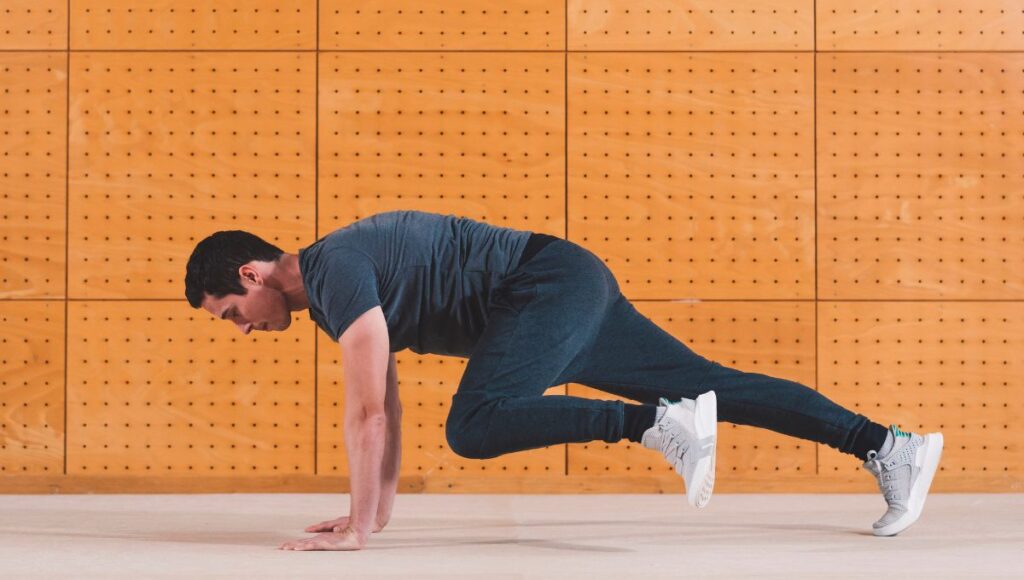
4. Bridge Pose
Lie on your back with your knees bent and feet flat on the floor. Lift your hips off the ground while squeezing your glutes and engaging your core.
Hold for a few seconds and lower your hips back down. Perform 10-15 repetitions.
The bridge pose targets the glutes, lower back, and hip flexors. As you lift your hips off the ground, it engages and strengthens the hip flexor muscles, promoting balance and flexibility in the hip region.
5. Standing Leg Raises
Stand tall with feet hip-width apart and hands resting on a wall or chair for support.
Lift one leg forward as high as you comfortably can while maintaining a straight posture and engaging your core muscles. Slowly lower the leg back down, then repeat with the other leg.
This exercise targets the hip flexors while also engaging the core stabilizers.
Incorporating these top five hip flexor drills into your routine will help strengthen and improve flexibility in your hips, leading to better posture, reduced lower back discomfort, and enhanced athletic performance.
Using a Foam Roller On Your Hip Flexors
Using a foam roller on your hip flexors can be a game-changer when it comes to releasing tension and improving flexibility.
This self-myofascial release technique targets the deeper layers of muscle and connective tissue, helping to alleviate tightness and discomfort in the hip flexor region.
So, grab your foam roller, and let’s dive into some effective techniques to give your hips some much-needed TLC!
1. Quad Roll
One popular technique for releasing tension in the hip flexors is called the “quad roll.” Start by positioning yourself face down on the floor with your legs extended.
Place the foam roller just above your knees and support yourself with your forearms. Begin rolling up and down, targeting the front of your thighs, where the hip flexors are located.
Pause at any tight or tender spots you encounter along the way, taking deep breaths as you allow pressure to release gradually. Repeat this movement for a few minutes, focusing on different angles by slightly rotating your body.
2. Side-Lying Foam Rolling
Another great way to target those stubborn hip flexors is through side-lying foam rolling. Lie down on one side with your bottom leg extended straight and the foam roller positioned underneath your upper thigh.
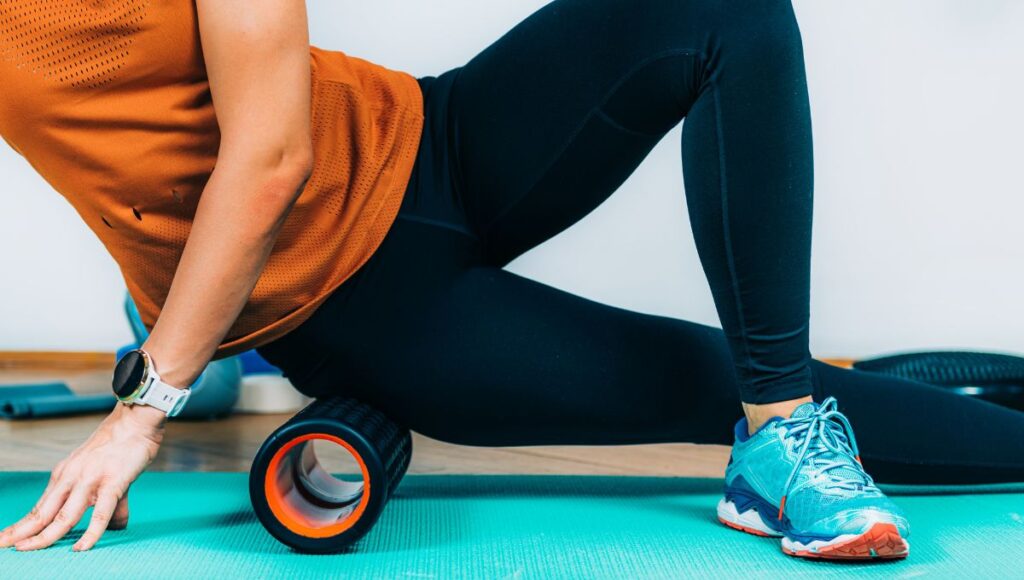
Use your forearm for support while gently rolling up and down along the length of your thigh, placing more emphasis on areas that feel particularly tight or tender.
This technique helps to address both large muscles like the quadriceps as well as smaller muscles like the psoas major that can contribute to hip flexor tightness.
Embrace the foam roller hip flexor drill as part of your fitness journey towards better movement patterns and increased vitality. Your body will thank you for it!
3. Tennis Ball
For an even more targeted approach, you can try using a tennis ball instead of a foam roller.
Place a tennis ball between yourself and a wall or lie down on top of it, targeting specific trigger points in your hip flexor area by applying gentle pressure against it.
Move around slowly until you find areas that feel particularly tender or tight, then hold for 20-30 seconds while taking deep breaths before releasing.
Remember, when using a foam roller or any other self-massage tool, it’s important to listen to your body and adjust the pressure accordingly.
You want to feel a deep sensation of release without causing sharp pain or discomfort.
Regularly incorporating foam roller hip flexor drills into your routine can help improve hip mobility, alleviate tightness, and even contribute to better overall posture and performance in various physical activities.
So, roll out those hip flexors with a foam roller and give them some much-deserved attention. Your hips will thank you!
Conclusion
Incorporating hip flexor drills into your fitness routine can greatly benefit your overall strength, flexibility, and mobility. By understanding the importance of proper hip flexor function and addressing any weaknesses or tightness in this area, you can enhance your performance in various activities and reduce the risk of injury.
Remember, consistency is key when it comes to reaping the benefits of hip flexor drills. Incorporate these exercises into your regular workout routine at least two to three times a week for optimal results.
Over time, you will notice increased strength and flexibility in your hips, improved posture, reduced lower back pain, enhanced athletic performance, and an overall greater sense of well-being.
So go ahead – take care of those precious hip flexors!
You might also be interest in reading our article on yoga poses for beginners


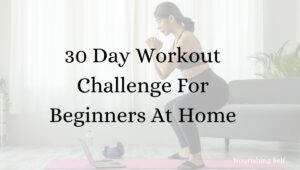
Comments (5)
Cardio Workouts At Home: Ways To Workout With No Equipment – Nourishing Self
November 9, 2023 at 11:50 am
[…] 5 Hip Flexor Drills To Target Weak & Tight Hips […]
Yoga For Better Sleep: 12 Best Practices & Tips To Get Better Rest – Nourishing Self
November 10, 2023 at 3:05 pm
[…] soothing reclined posture gently stretches the inner thighs and hips while opening up the chest and relieving tension from these areas – all crucial for releasing […]
30 Day Workout Challenge For Beginners At Home – Nourishing Self
November 19, 2023 at 7:22 pm
[…] Next, focus on specific stretches for the major muscle groups you’ll be targeting during your workout. For example, if you’re planning a 10-minute HIIT workout at home for beginners that involves squats and lunges, spend some time stretching your quadriceps, hamstrings, calves, and hip flexors. […]
Best 6 Day Workout Split: How To Break Up Your Workouts Across The Week – Nourishing Self
November 19, 2023 at 7:30 pm
[…] Lunges work wonders for sculpting your quadriceps, hamstrings, glutes, and even engage stabilizer muscles in your hips. […]
Cobra Pose Yoga: How To, Tips & Common Mistakes – Nourishing Self
November 19, 2023 at 7:31 pm
[…] a bolster beneath the hips can provide additional support and help maintain the natural curve of the lower back. Moreover, […]
Comments are closed.